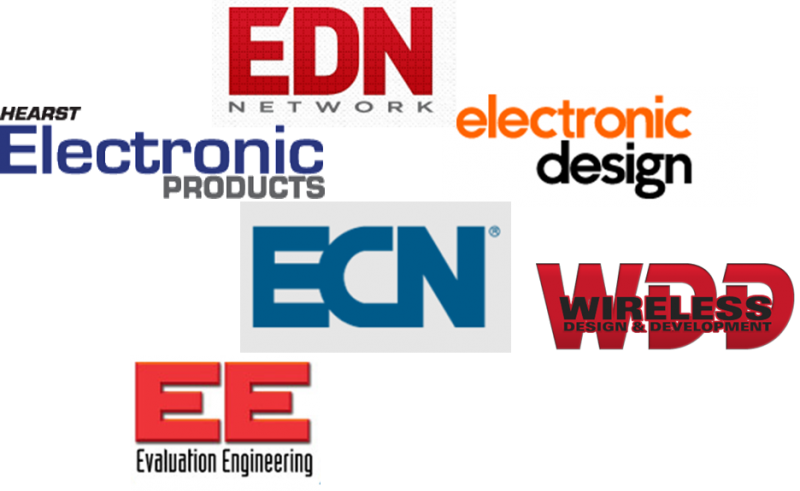

2014 is officially here and underway and all of us at Tektronix are full steam ahead after a very productive 2013. While this year is proving to be another exciting time we wanted to take a moment to reflect on the best of the last year. The following highlights some of the technical articles written by Tektronix. Take a look and enjoy!

Electronic Design featured an article on Getting the Most from Logic Analyzers. The logic analyzer is a versatile tool that can help engineers with digital hardware debug, design verification and embedded software debug, yet many engineers turn to a digital oscilloscope when they should be turning to a logic analyzer. This article looks at the operation of modern logic analyzers and then provides a number of useful measurement and application examples ranging from protocol test, setup and hold violations; all intended to enhance signal integrity analysis.
EDN covered the topic of Stimulus Test Signals using MATLAB. One of the more challenging tasks facing test engineers is the creation of stimulus signals to exercise a PCB prototype or a silicon turn, or to define complex high-frequency modulated signals for RF technologies. While a bench top full of pulse, function, modulation and RF generators is one approach, direct synthesis signal generation offers far greater flexibility. This article provides an overview of direct synthesis technology and then offers hand-on examples of how the MATLAB development environment can be used to create direct synthesis signals.
The rush to deploy 100G technology is in full swing, meaning that engineers needs to come up to speed on the range of transmitter and receiver tests necessary to assemble a 100G system. Evaluation Engineering featured an article that first looks at emerging 100 Gb/s and related standards and then discusses hands-on techniques for testing optical and electrical transmitters and receivers.
If you are looking for a quick ready check out ECN’s Five Things You Really Want in a Digital Oscilloscope.
With serial data rates continuing to climb, it’s vitally important to minimize the impact of the measurement system’s internal noise on the measured signal. As output voltages shrink in order to boost speeds, the margin between pass and fail keeps shrinking to the point where noise from the signal and the measurement system can combine to close the eye. Electronic Design took a look at the measurement challenges associated with higher serial bus speeds with a focus on the 30 GHz connection between the signal access point and the oscilloscope, including tips on using probes and link analysis software to boost measurement accuracy at these higher data rates.
Ever wonder about Debugging DDR Memory Interfaces using Area-Based Triggers? Then this feature is for you! DDR bus protocol allows signals to go idle, or tri-state, when they are not active. When debugging or performing JEDEC conformance measurements on the DDR interface, it is often necessary to perform certain measurements only on qualified portions of the signal acquired using an oscilloscope, such as during READ or WRITE bursts or on bus transactions to a specific rank. Capturing and finding the correct sections of the waveform for analysis on the DDR interface is challenging since it can require collecting and sorting through thousands of acquisitions for the event of interest. Defining a trigger that isolates the desired event and shows only asserted signal states greatly speeds up the debug and characterization of memory interfaces. This Electronic Products article looks at the use of area-based triggers for this purpose.
Wireless Design & Development covered a product how-to on using the MDO4000 Mixed Domain Oscilloscope for wireless system-level test. Check it out!
Pulse-width modulated motor drives are becoming the dominant method of variable speed motor control, and are being used not only in industry, but in applications as diverse as electric vehicles and domestic air conditioners. PWM drives produce complex waveforms, both on the motor output and in the electrical supply to the drive. Power Electronics takes a look at the electrical characteristics of PWM motor drives and the electrical measurements used for proper analysis.
Getting Ready for M-PCIe Test and Measurement - The PCI-SIG, the organization behind PCI Express, and the MIPI Alliance, the organization behind M-PHY, are rolling out a new M-PCIe specification that combines the low-power, flexible signaling electrical performance of M-PHY with the interoperability and I/O functionality of PCIe. For designers still coming up to speed on the latest PCIe 3.0 and M-PHY technology, this new technology will present a number of test and measurement challenges. EDN highlights the important elements of the emerging specification as it relates to design & test, and outline key considerations as this standard gains acceptance.
Check out these M-PHY Testing Tips & Tricks! About 3 billion MIPI-powered ICs were shipped in 2012, but of those only 100 million were based on the high-performance, low-power M-PHY specification. That is certain to change in the coming years as M-PHY will be used in the development of high-end mobile devices to deliver increased performance, effective power management schemes, robustness against RF interferences and low RF emission. This article featured in EP&T provides an overview of the M-PHY trends and offer guidance and tips and tricks for M-PHY verification, debug and compliance testing.
And there you have it! A quick glance at some of the articles we are proud to have placed this past year.
Be sure to keep your eye out for even more topics of conversation, industry trends and new Tektronix products in 2014! And feel free to share your thoughts below on these articles or any other favorites from 2013.


